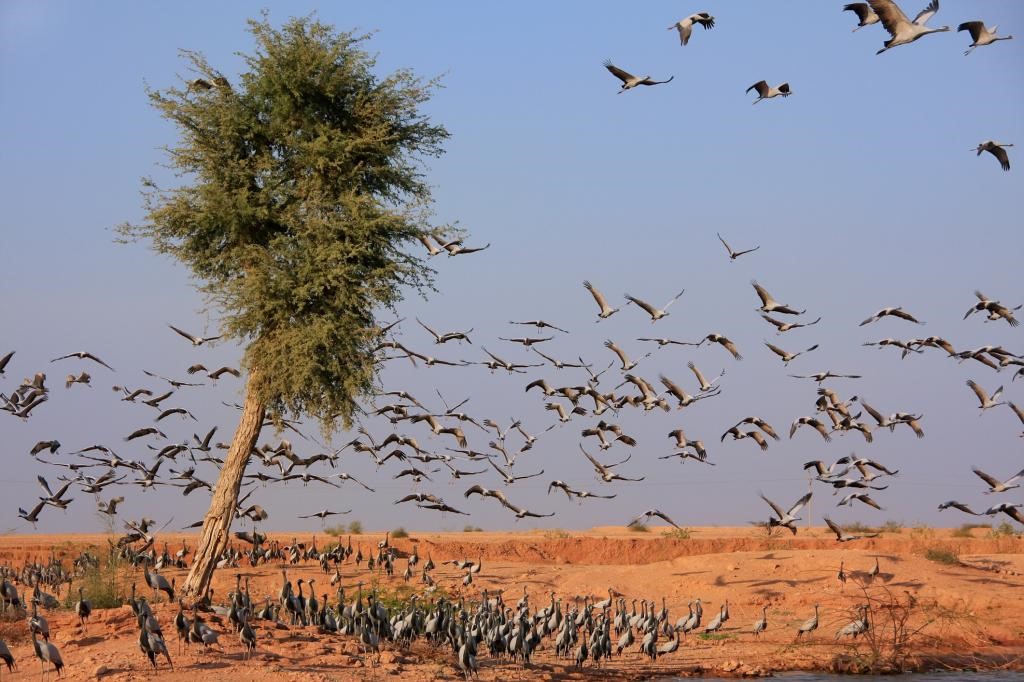
Oran (Sacred Groves)

09.03.2024
Oran (Sacred Groves) , Daily Current Affairs , RACE IAS : Best IAS Coaching in Lucknow
|
For Prelims: About Oran, Why are the people of Rajasthan worried about this proposal, Important points,What are sacred groves |
Why in the news?
Recently the people of Rajasthan (especially those of Western Rajasthan) are concerned about the state's proposal to classify Oran (sacred groves) as recognized forests.
Important points:
- Notification declaring Oran and ecological areas as deemed forests was issued on February 1, 2024.
- As per the instructions of the Supreme Court, Oran, Dev-Van and Rundho will be given the status of deemed forest as forest land.
- The notification also sought objections and issues from the local people till March 3, 2024.
Why are the people of Rajasthan worried about this proposal?
- Once Oran is declared a forest, they will be deprived of access to forest produce and herds and sheep in the forest area.
- If the State Forest Department takes possession then these people will have to vacate the land.
- These concerns are valid, as places of worship, funerals and religious events also take place inside Oran.
- The Rajasthan government has not issued clarity in terms of guidelines or rules after marking these Oran in the deemed forest category.
- There are many temples, places of worship and lands registered under different ownership.
- Therefore, if the Godavarman judgment of 1996 is applied then the use of the land is contrary to the definition of forest.
About Oran:
- Orans are traditional sacred groves found in Rajasthan.
- These are community forests, protected and managed by rural communities through institutions and codes that consider such forests sacred.
- Local deities are often associated with Oran.
- Orans are rich in biodiversity and usually include water bodies.
- Communities in Rajasthan have been preserving these oran for centuries, and their lives are intricately linked around these places.
- Here villagers use the forest area for cattle grazing, pastures and livelihood. At least 5,000 camels and 50,000 sheep depend on Degree Oran, located in our village.
- The villagers use gum, wood, forest produce and wild vegetables obtained from Oran for their livelihood and daily use.
- Orans are also places where herders take their animals to graze and are places for communal gatherings, festivals and other social events, the performance of which is linked to agricultural rhythms and the communities' ongoing commitment to environmental protection. .
- Oran also forms the natural habitat for India's most critically endangered bird, the Great Indian Bustard (GIB), a protected species under the Wildlife Protection Act, which is also the state bird of Rajasthan.
What are sacred groves?
- Sacred groves are relict forest areas traditionally preserved by communities in honor of a deity.
- They form important reserves of forest biodiversity and provide shelter to many plant and animal species of conservation importance.
- Sacred groves are found throughout India, especially in states like Maharashtra, Karnataka, Kerala and Tamil Nadu.
- These are known as Kavu or Sarpa Kavu in Kerala, Devarakadu or Devkad in Karnataka, Devarai in Maharashtra, Jahera or Thakuramma in Odisha etc.
Source: Down to earth